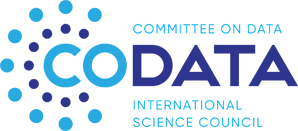SDG-13 climate change and natural disasters
Introduction
CASEarth for Sustainable Development Goals (CASEarth4SDGs), www.sdgs.casearth.cn, is a platform system of data sharing and online computing for monitoring, measuring, and evaluating SDG indicators under the Big Earth Data Science Engineering Program (CASEarth). Once assembled, it will provide a tool to generate knowledge from numerous and complex data sources, with the objective of supporting and understanding a sustainable human society that is essential to the protection of the planet. This Case Study concentrates on SDG-13, which focuses on climate change and natural disasters.
We seek other SDG-13, climate change and disaster risk reduction related initiatives to participate in this Case Study. Sign-up here.
Significance of the Case Study
The sharing of research data across numerous disciplines is vitally important for decision making in the assessment of and response to the effects of climate change and natural disasters. Climate change and its effects are increasingly an existential crisis for all humanity and requires concerted international cooperation to help resolve. This Case Study focuses on SDG-13 and aims to:
- establish an integrated professional database of climate change, extreme climate and natural disasters;
- develop a dynamic monitoring and risk assessment model system;
- study the large-scale patterns and heterogeneity of climate change and natural disasters;
- achieve high-precision comprehensive assessment and seasonal prediction on the temporal changes and spatial patterns of extreme climate events and natural disasters; and
- explore the causes and frequency of regional extreme climate and related natural disasters, providing science-based support for disaster mitigation.
This demonstration of data uses for SDG-13 and the related technical and policy study will cast light on the extreme climate induced disasters in various geographies and countries.
Research challenges and requirements for GOSC
During its first stage of operation in 2021, CASEarth4SDGs programme will produce 3 Petabytes (PB) of data. The total data volume will increase to 10PB during its full operational stage in 2023. As one of its main components, the research work of SDG-13 will produce 1.2 PB data focusing on:
- temporal and spatial patterns of climate change;
- collection and sharing of research data on extreme climates and disasters; and,
- short-term forecasting and seasonal prediction of climate disasters, as well as the monitoring and assessment of natural disasters.
Challenges include how to handle ‘in real-time’ high-resolution and multi-source Big Earth data at global, regional, and national scales that will be generated at great speeds and volumes.
Engagement with the GOSC Initiative
This case study will address the interoperability (technical, semantic, and policy) and other data management issues using high-performance computing facilities by exploring models for cross-border data exchanges for decision-making and multi-source data analytics. Because the CASEarth program and this case study intersect closely with the Digital Belt and Road (DBAR) Initiative, some partners have already been identified from established DBAR International Centers of Excellence (ICOEs) that are doing work in SDG-13. Other partners on the Case Study are invited.
The three ICOEs initially identified include ICOE Bangkok, ICOE Zambia, and ICOE Morocco. While the ICOE Bangkok is focused on climate change, the other two ICOEs are concerned with agriculture and water, respectively, which are two well-known disaster areas affiliated with climate change. Joint work under the GOSC Initiative umbrella may include:
- Secure check-in data services for accessing cross-border services for improving modelling, simulation, and prediction.
- Data sharing model(s) and federated data activities.
- Collaborations on necessary activities for community engagement, involving CASEarth4SDGs and other initiatives, and with a focus on SDG-13.
Possible deliverables
Anticipated outputs from this Case Study may focus on the following aspects:
- Metadata and database federation, between CASEarth4SDGs and other initiatives, especially focusing on SDG-13.
- Cooperative development of the online Computing and Processing Toolkit for SDG-13 indicators.
- Exploration of cloud federation techniques supporting on-demand data processing and analysis for SDG-13.
Case Study Co-chairs
Bapon Fakhruddin, Tonkin+Taylor, New Zealand
Gensuo Jia, Institute of Atmospheric Physics, CAS
Monthip Sriratana, National Research Council of Thailand, Thailand
Secretariat Contact
Lili ZHANG, CNIC, CAS
Jiao MU, Institute of Atmospheric Physics, CAS
Additional participants are invited: sign-up here, if interested to join the Case Study.
